Types of Aloe Vera Plants: A Comprehensive Guide
Aloe vera is a popular succulent plant known for its medicinal properties. It is widely used for its healing and moisturizing properties in the cosmetic and pharmaceutical industries. The plant is native to North Africa but is now found in many parts of the world, including the Americas, Asia, and Europe.
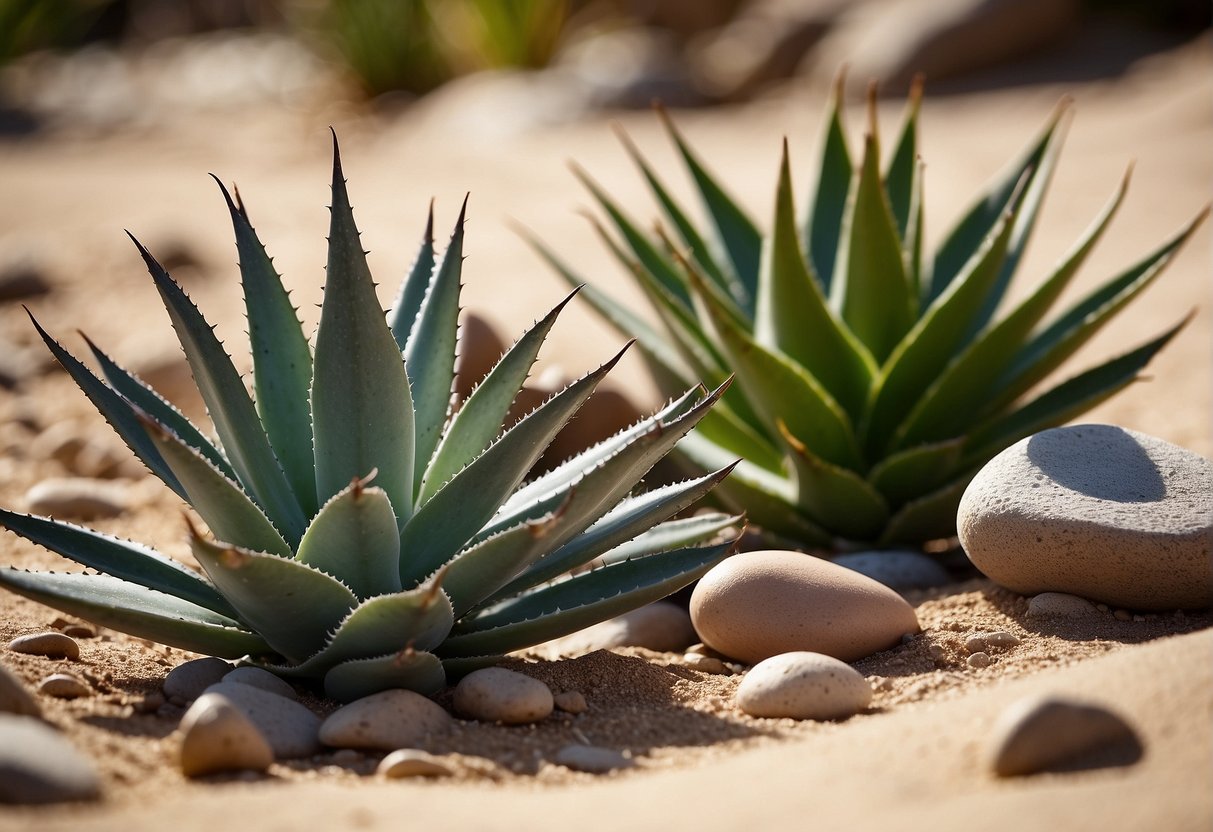
There are over 500 species of aloe, but only a few are commonly used for their medicinal properties. Aloe vera is the most popular species, but there are other types of aloe plants that are also used for their therapeutic benefits. These include Aloe arborescens, Aloe ferox, and Aloe barbadensis. Each of these species has unique characteristics and properties that make them valuable in different ways. In this article, we will explore the different types of aloe vera plants and their uses.
Aloe Vera Species Overview
Aloe vera is a succulent plant species that belongs to the genus Aloe. It is a popular plant known for its medicinal properties and is widely used in the cosmetics industry. There are several species of aloe vera, each with its own unique characteristics and benefits.
Aloe Barbadensis Miller
Aloe Barbadensis Miller, also known as Aloe Vera, is the most commonly used species of aloe vera. It is a stemless plant with thick, fleshy leaves that grow in a rosette pattern. The leaves contain a clear gel that is rich in vitamins, minerals, and antioxidants. Aloe Barbadensis Miller is commonly used in skincare products and is known for its moisturizing and healing properties.
Aloe Arborescens
Aloe Arborescens is a tree-like aloe species that can grow up to 10 feet tall. It has long, narrow leaves that grow in a rosette pattern and produce bright orange flowers. The leaves contain a gel that is rich in antioxidants and is used for its anti-inflammatory properties.
Aloe Ferox
Aloe Ferox, also known as Cape Aloe, is a tall, single-stemmed aloe species that can grow up to 10 feet tall. It has long, narrow leaves that grow in a rosette pattern and produce bright red flowers. The leaves contain a bitter yellow sap that is used for its laxative properties.
Aloe Polyphylla
Aloe Polyphylla, also known as Spiral Aloe, is a rare and unique aloe species that is native to Lesotho. It has thick, fleshy leaves that grow in a spiral pattern and produce pink flowers. Aloe Polyphylla is a popular ornamental plant and is known for its striking appearance.
Aloe Aristata
Aloe Aristata, also known as Lace Aloe, is a small aloe species that grows up to 12 inches tall. It has narrow, pointed leaves that grow in a rosette pattern and produce small white flowers. Aloe Aristata is commonly used in rock gardens and is known for its drought tolerance.
In conclusion, there are several species of aloe vera, each with its own unique characteristics and benefits. Aloe vera plants are widely used for their medicinal and cosmetic properties and are a popular choice among gardeners and plant enthusiasts.
Cultivation and Care
Sunlight and Shade Requirements
Aloe vera plants thrive in full sun, but they can also tolerate partial shade. When growing them indoors, it’s best to place them near a window that receives bright, indirect sunlight. If grown outdoors, they should be planted in a spot that receives at least six hours of sunlight per day.
Watering and Soil Preferences
Aloe vera plants prefer well-draining soil that is slightly acidic with a pH between 6.0 and 7.0. They should be watered deeply but infrequently, allowing the soil to dry out completely before watering again. Overwatering can lead to root rot, so it’s essential to ensure that the soil is completely dry before watering.
Propagation Techniques
Aloe vera plants are easy to propagate through stem cuttings or offset division. To propagate through stem cuttings, cut a healthy stem from the mother plant and allow it to dry out for a few days before planting it in well-draining soil. To propagate through offset division, gently remove the offsets from the mother plant and plant them in their own containers.
When caring for aloe vera plants, it’s important to keep in mind that they are succulents and are adapted to survive in arid conditions. Overwatering, over-fertilizing, and placing them in areas with low light can lead to health problems. By providing them with the right amount of sunlight, well-draining soil, and infrequent watering, aloe vera plants can thrive as houseplants or in garden containers.
Physical Characteristics
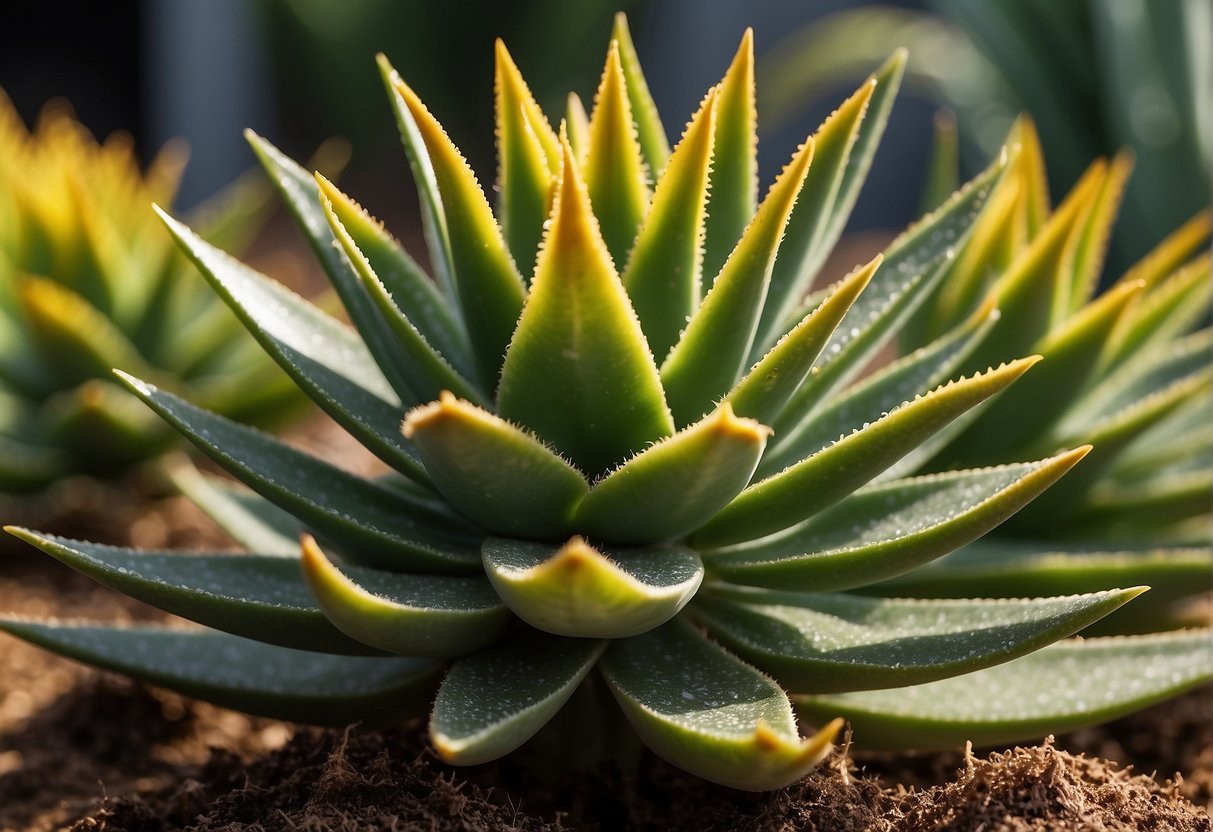
Leaf Descriptions
Aloe vera plants are known for their fleshy leaves that grow in a rosette pattern. The leaves of the aloe vera plant are typically green, but they can also have orange or red spots. The leaves are thick and have spines along the edges, which can be sharp. The teeth on the leaves are also known as marginal teeth and are often small and white.
Flower Varieties
Aloe vera plants produce tubular flowers that come in a variety of colors including orange, red, yellow, and green. The flowers are typically orange and grow on a tall stem that can reach up to 3 feet in height. The flowers are also known for their sweet fragrance.
Overall, the physical characteristics of aloe vera plants make them a popular choice for both indoor and outdoor gardens. Their thick leaves and fleshy texture make them easy to care for, while their colorful flowers add a touch of beauty to any space.
Aloe Vera in Home and Garden
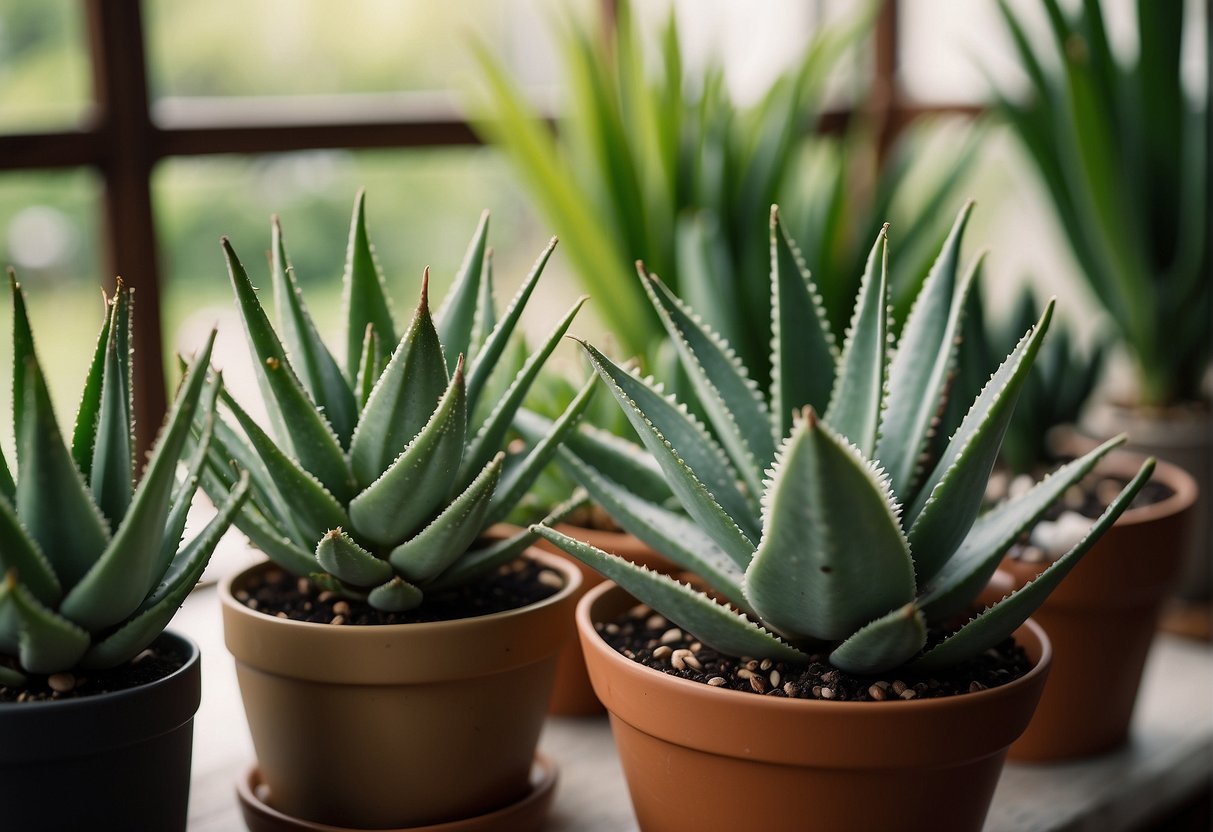
Aloe Vera is a popular houseplant and garden addition due to its unique appearance and low maintenance requirements. There are several types of Aloe Vera plants that can be grown indoors or outdoors, depending on the climate and environment.
Indoor Aloe Plants
Indoor Aloe plants are perfect for those who want to bring a touch of greenery to their homes without the hassle of maintaining a large garden. Aloe Vera plants thrive in indirect light and require minimal watering, making them an ideal choice for those who are new to gardening or have a busy lifestyle.
One of the most popular indoor Aloe plants is the Aloe Vera Barbadensis Miller, which is known for its soothing gel that has a variety of health benefits. This type of Aloe plant is easy to care for and can be grown in a small pot on a windowsill or in a larger container on a patio.
Outdoor Aloe Gardens
Aloe Vera is also a great addition to any outdoor garden, especially in warm, dry climates. Aloe plants are succulent plants, which means they store water in their leaves and can survive in hot, dry conditions. They are also resistant to pests and diseases, making them a low-maintenance choice for gardeners.
When planting Aloe Vera in an outdoor garden, it is important to choose a well-draining soil and a location that receives plenty of sunlight. Aloe plants can be planted in containers or directly in the ground, depending on the size of the garden.
Overall, Aloe Vera is a versatile plant that can be grown both indoors and outdoors. With its unique appearance and low maintenance requirements, it is a great choice for those who want to add a touch of greenery to their homes or gardens.
Health Benefits and Uses
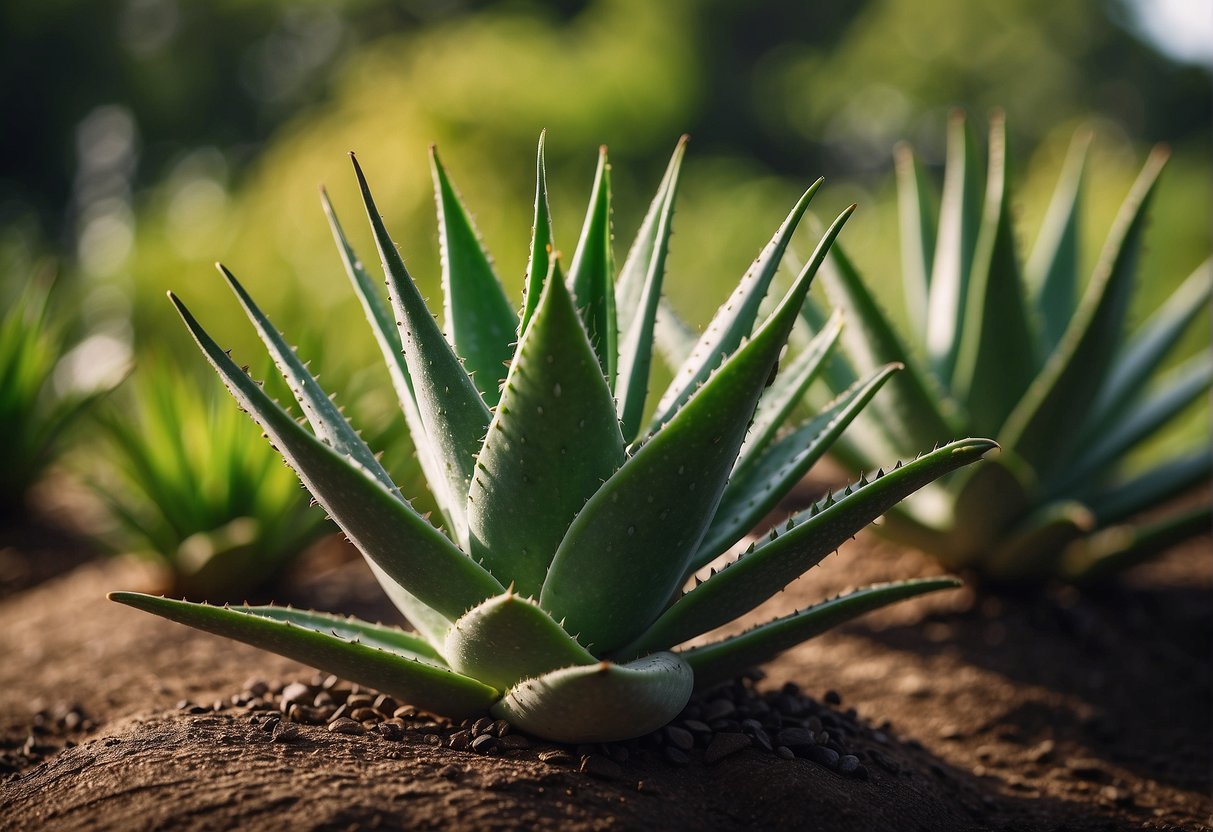
Aloe vera has been used for its medicinal properties for centuries. The gel inside the leaves of the aloe vera plant contains a variety of beneficial compounds, including vitamins, minerals, and amino acids. Some of the health benefits and uses of aloe vera are:
- Skin care: Aloe vera gel is commonly used in skin care products due to its moisturizing and soothing properties. It can help to alleviate dry skin, sunburn, and other skin irritations.
- Digestive health: Aloe vera has been used as a natural laxative for centuries. The latex, or yellow sap, found just beneath the outer skin of the leaves contains anthraquinones, which can help to stimulate bowel movements.
- Immune system support: Aloe vera contains compounds such as acemannan, which have been shown to help support the immune system.
- Wound healing: Aloe vera gel has been used to help speed up the healing process of minor burns, cuts, and other wounds. It can help to reduce inflammation and promote tissue regeneration.
It is important to note that while aloe vera has many potential health benefits, it should not be used as a substitute for medical treatment. If you have a medical condition or are taking medication, it is always best to consult with a healthcare professional before using aloe vera or any other natural remedy.
Unique Aloe Varieties
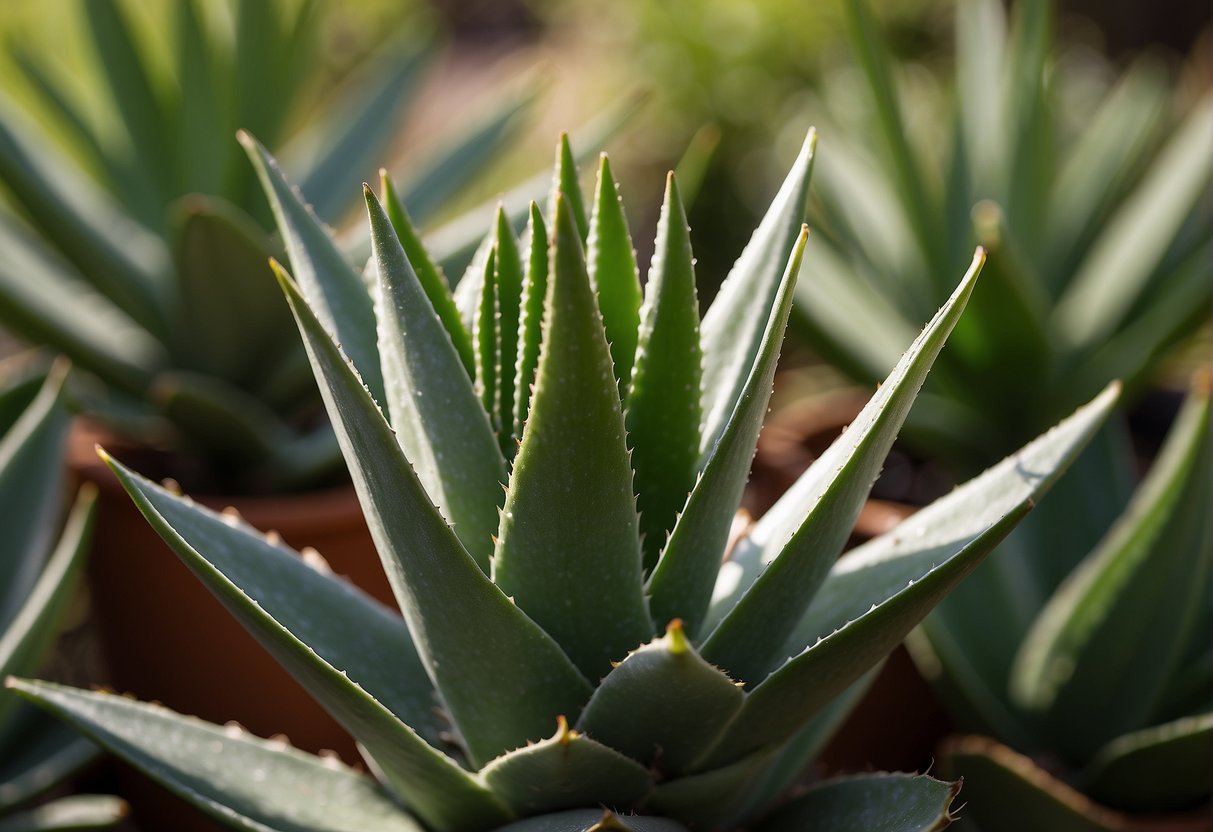
Aloe plants are known for their healing properties and are widely used in cosmetics and medicinal products. While most people are familiar with the common aloe vera plant, there are many other unique varieties that are worth exploring. In this section, we will take a closer look at some of the most unique aloe varieties.
Spiral Aloe
The Spiral Aloe (Aloe polyphylla) is a rare and stunning plant that is native to Lesotho, a small country in Southern Africa. This plant is known for its unique spiral growth pattern, which is a result of its leaves growing in a spiral formation. The Spiral Aloe is a slow-growing plant that can take up to 10 years to reach maturity. Its leaves are pale green with white teeth and pinkish stripes. The plant produces beautiful yellow flowers in the summer.
Tiger Tooth Aloe
The Tiger Tooth Aloe (Aloe juvenna) is a small, compact plant that is native to Kenya and Tanzania. This plant is named for its tooth-like leaves that are green with white spots. The leaves grow in a rosette formation and can reach up to 12 inches in height. The Tiger Tooth Aloe produces bright orange flowers in the summer, which attract bees and other pollinators.
Candelabra Aloe
The Candelabra Aloe (Aloe arborescens) is a large, tree-like plant that is native to South Africa. This plant is named for its candelabra-like growth pattern, with multiple branches growing from a single stem. The Candelabra Aloe can grow up to 10 feet tall and produces large clusters of orange-red flowers in the winter. This plant is known for its medicinal properties and is used to treat a variety of ailments, including burns, wounds, and digestive issues.
In conclusion, there are many unique aloe varieties that are worth exploring. From the Spiral Aloe’s stunning spiral growth pattern to the Candelabra Aloe’s medicinal properties, each variety has its own unique characteristics and benefits. Whether you are looking to add some greenery to your home or garden or are interested in the medicinal properties of these plants, there is an aloe variety out there for everyone.
Frequently Asked Questions
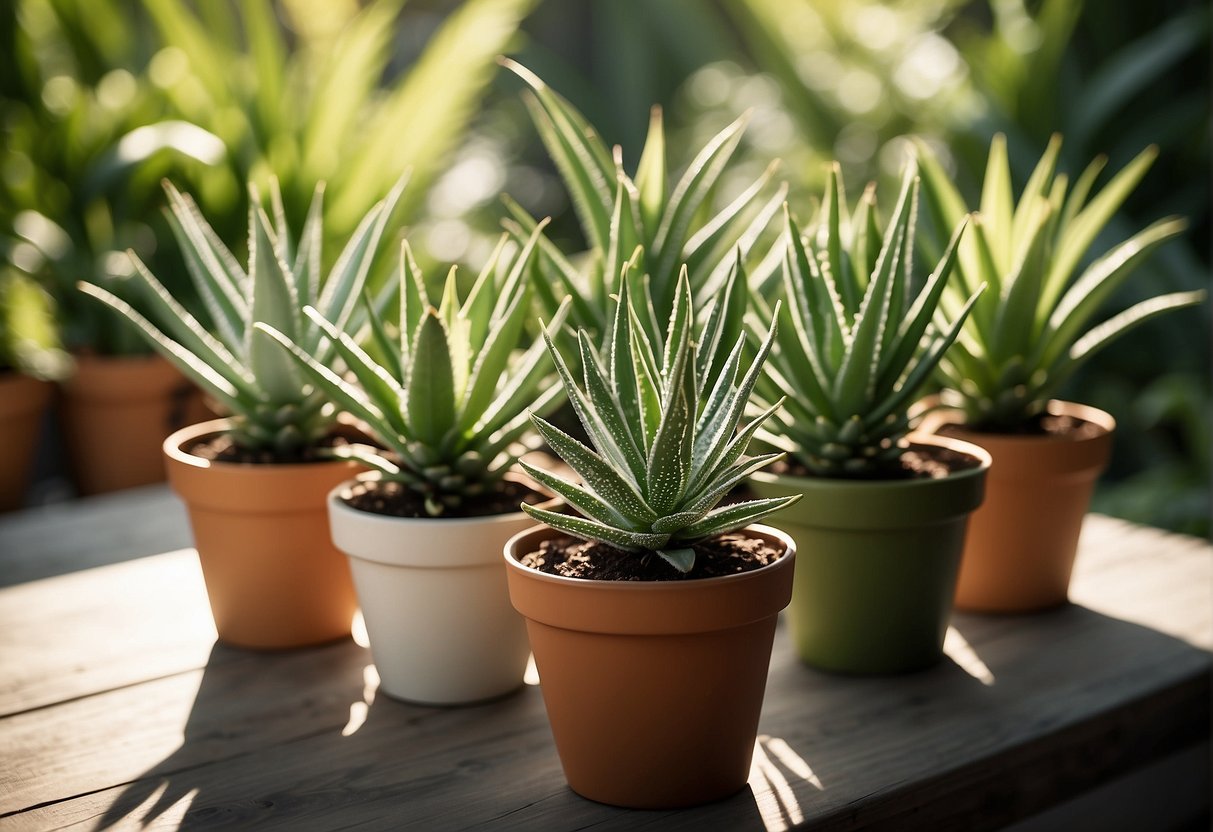
What are the distinguishing features of different types of aloe vera plants?
Different types of aloe vera plants have varying features, such as leaf size, shape, color, and texture. Some may have white spots or stripes on their leaves, while others have smooth or rough surfaces. Some species also have unique growth habits, such as clustering or branching. Overall, aloe vera plants are known for their thick, succulent leaves that contain a gel-like substance.
How can you identify various aloe species, particularly those with white spots?
Identifying different aloe species can be challenging, but some common features can help. For example, aloe vera has smooth, green leaves without any white spots, while aloe aristata has small white teeth on its leaf margins. Aloe vera variegata has creamy-white stripes on its leaves, and aloe maculata has white spots on its leaves. Aloe ferox has rough, spiky leaves with reddish-brown edges. Consulting a plant identification guide or an expert can also help in identifying different aloe species.
What are the best aloe vera varieties for indoor cultivation?
Aloe vera is a popular indoor plant due to its low maintenance requirements and air-purifying properties. Some of the best aloe vera varieties for indoor cultivation include aloe vera barbadensis, aloe vera chinensis, and aloe vera juvenna. These species have compact growth habits and can thrive in a range of indoor conditions, such as bright, indirect light and well-draining soil.
Can you provide a guide to the uses of different aloe vera plants?
Aloe vera plants have various uses, such as medicinal, cosmetic, and culinary. Aloe vera gel is commonly used to soothe sunburns, moisturize skin, and treat minor wounds. Aloe vera juice is also consumed for its potential health benefits, such as improving digestion and boosting immunity. Some aloe species, such as aloe ferox and aloe arborescens, are used in traditional medicine for their laxative and anti-inflammatory properties. Aloe vera gel can also be used in cooking as a natural thickener or sweetener.
Are there any aloe vera species that are unsafe or poisonous to consume?
While aloe vera gel and juice are generally considered safe for consumption, some aloe species contain toxic compounds that can cause adverse effects. For example, aloe vera variegata and aloe vera chinensis contain aloin, a laxative that can cause cramping, diarrhea, and electrolyte imbalances if consumed in large amounts. Aloe ballyi and aloe dichotoma contain compounds that can cause liver damage if ingested. It is important to consult a healthcare professional before consuming any aloe vera products.
Which aloe vera types are most beneficial for skin care?
Aloe vera gel is a popular ingredient in skin care products due to its moisturizing, anti-inflammatory, and antioxidant properties. Some of the best aloe vera types for skin care include aloe vera barbadensis, aloe vera chinensis, and aloe vera arborescens. These species have high concentrations of beneficial compounds, such as polysaccharides, amino acids, and vitamins, that can help soothe and nourish the skin.

